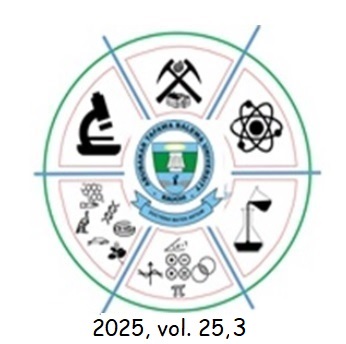Mathematical Modeling of Banditry and Sustainable Pathways to Peace: Optimal Control through SDG-Based Intervention Strategies
Keywords:
Banditry, Mathematical Modeling, Optimal Control, SDGs, Education, Security, Reintegration, Nigeria.Abstract
Banditry has emerged as one of Nigeria’s most urgent security and developmental crises,
destabilizing communities, disrupting education, undermining livelihoods, and eroding public trust
in governance. This study develops a student-focused mathematical model that explicitly
captures the dynamics of banditry while assessing optimal intervention strategies grounded in
the Sustainable Development Goals (SDGs). In contrast to earlier models that address banditry
primarily from broad socio-political perspectives, this research foregrounds the vulnerabilities
of students and educational institutions—demonstrating how persistent insecurity threatens
human capital development and national progress. The model presented in this study introduces
three strategic control levers: security and justice enforcement (u₁), education and job creation
(u₂), and rehabilitation and reintegration programs (u₃). Employing an epidemic-inspired
compartmental framework, Pontryagin’s Maximum Principle, and Forward-Backward Sweep
numerical simulations, the study evaluates the “banditry reproduction number” across different
intervention scenarios. Findings reveal that an integrated triple-strategy approach (u₁+u₂+u₃) is
most effective, rapidly suppressing banditry while fostering long-term reintegration of
offenders. In contexts constrained by limited resources, the dual strategy combining security
enforcement with education and employment opportunities (u₁+u₂) emerges as the most practical
balance, disrupting recruitment pipelines while simultaneously addressing root causes. Numerical
results highlight key dynamics: enforcement measures reduce the pool of active bandits,
educational and employment programs block the inflow of new recruits, and rehabilitation
initiatives channel former offenders into productive and peaceful reintegration. The analysis
demonstrates that no single measure is sufficient; only coordinated, multi-dimensional strategies
can dismantle criminal structures, rebuild community resilience, and restore stability. By
explicitly linking outcomes to SDG 4 (Quality Education), SDG 8 (Decent Work and Economic
Growth), and SDG 16 (Peace, Justice, and Strong Institutions), this research provides a policy
relevant, evidence-based framework for designing sustainable intervention strategies. Beyond
Nigeria, the model offers broader insights into addressing violent criminality in fragile contexts
across West Africa, positioning mathematical modeling as a valuable tool for guiding
peacebuilding and development policy.
Downloads
Downloads
Published
Issue
Section
License
Copyright (c) 2025 Journal of Pure and Applied Sciences (Science Forum)

This work is licensed under a Creative Commons Attribution-NonCommercial-ShareAlike 4.0 International License.




